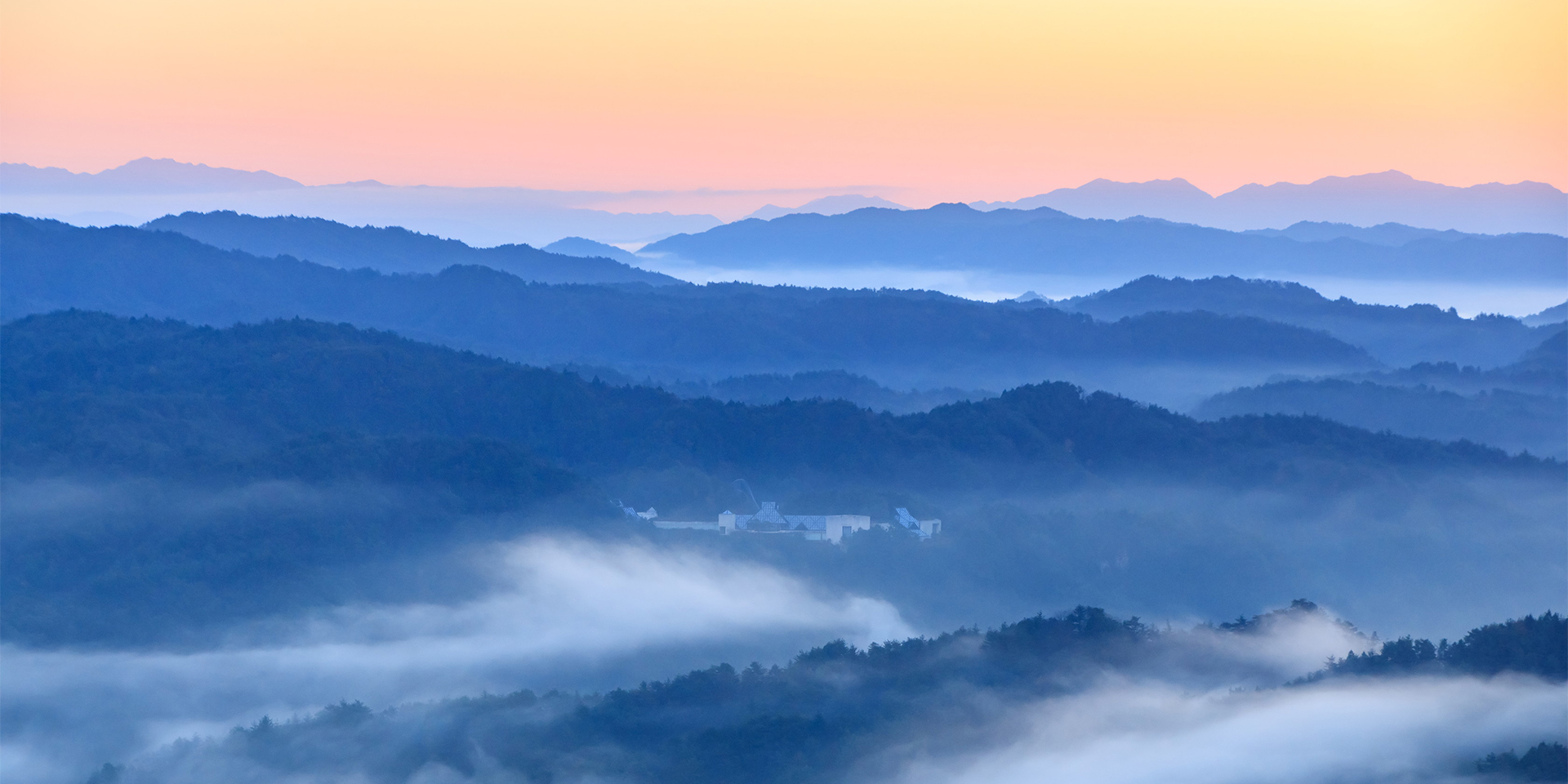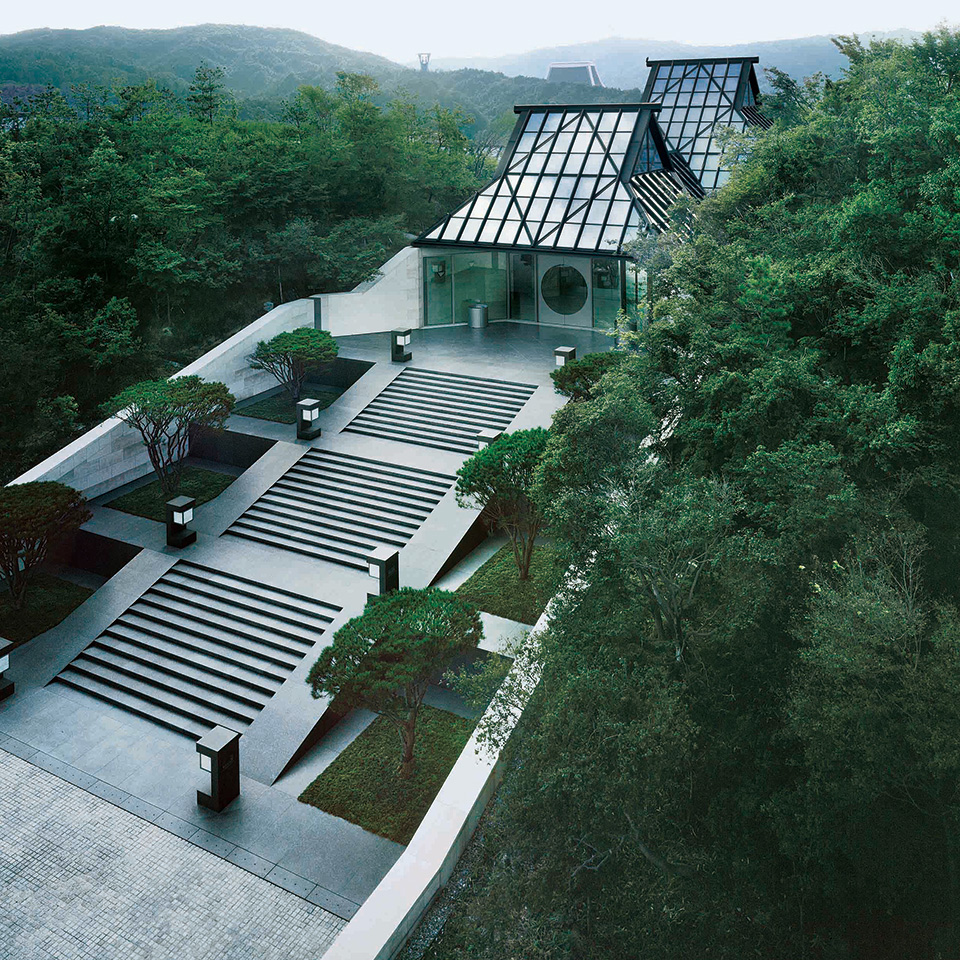
Concept
A Real-World Shangri-La
The Miho Museum opened in November 1997 amid the abundant natural beauty of the mountains of Shigaraki, Shiga prefecture. The collection started by the founder, Mihoko Koyama (1910 – 2003) is designed to fulfill her vision of promoting beauty, peace and joy through art. It includes a wide range of Japanese art, along with ancient art from areas such as Egypt, Western Asia, Greece, Rome, Southern Asia and China.
The approach to the museum was designed by architect I.M. Pei, who is renowned for works such as the glass pyramid at the Louvre in Paris. Visitors travel down a walkway enveloped by cherry trees and pass through a tunnel and over a bridge before arriving at the museum. The design was inspired by the ethereal utopia described in the Taohua Yuan Ji (The Peach Blossom Spring), an ancient Chinese work written by Tao Yuanming. The work tells the tale of a fisherman who roams into a grotto after being drawn in by the fragrant scent of a forest of blossoming peach trees. Emerging from the other side, he finds an idyllic village of inhabitants who all live joyfully, and welcome the fisherman into their homes.
The Miho Museum has been conceived as a real-world version of this village. We hope you will enjoy the harmonious blend of natural beauty, architecture, art and food it provides amid a vibrant backdrop of seasonal colors.

Miho Museum Milestones
- 1997
- Museum opens; Takeshi Umehara is appointed first Museum Director.
Museum is run by Shumei Culture Foundation.
- 2000
- Hiroo Inoue appointed Museum Director.
- 2005
- Nobuo Tsuji appointed Museum Director.
- 2006
- Number of visitors reaches one million.
- 2007
- Tenth anniversary of opening
- 2010
- “Miho Grandama—Arte della Luce” special exhibit held to commemorate 100 year anniversary of founder’s birth.
- 2014
- Number of visitors reaches two million.
- 2016
- Isao Kumakura appointed Museum Director.